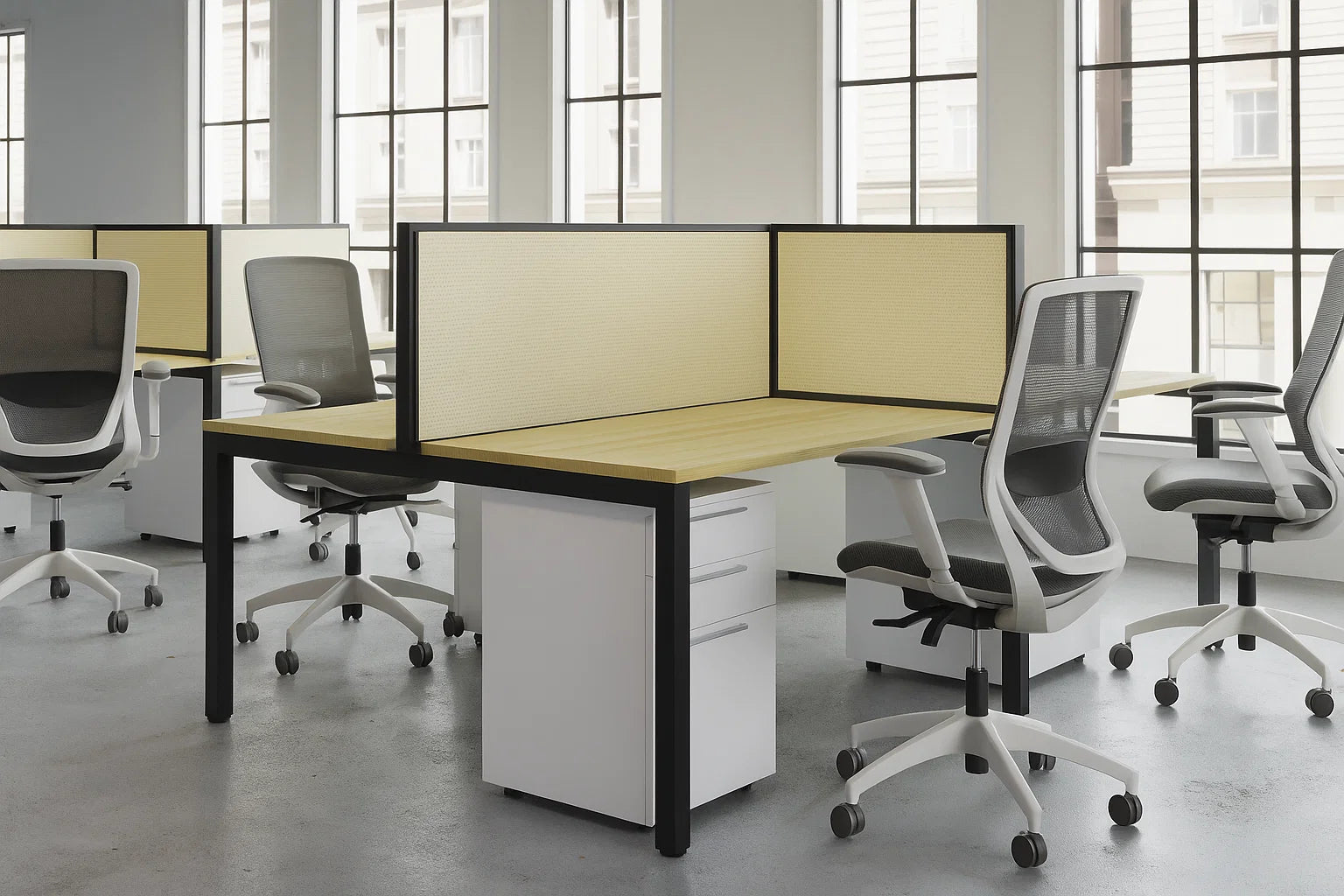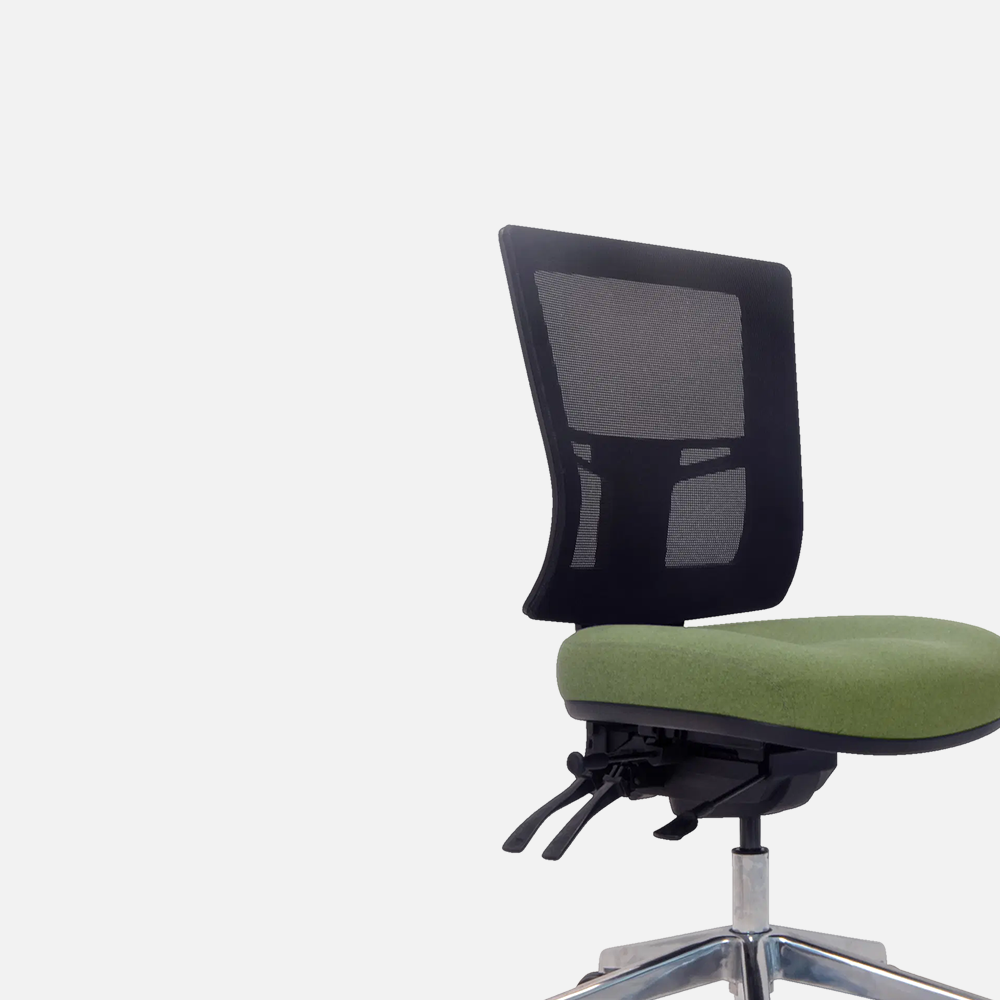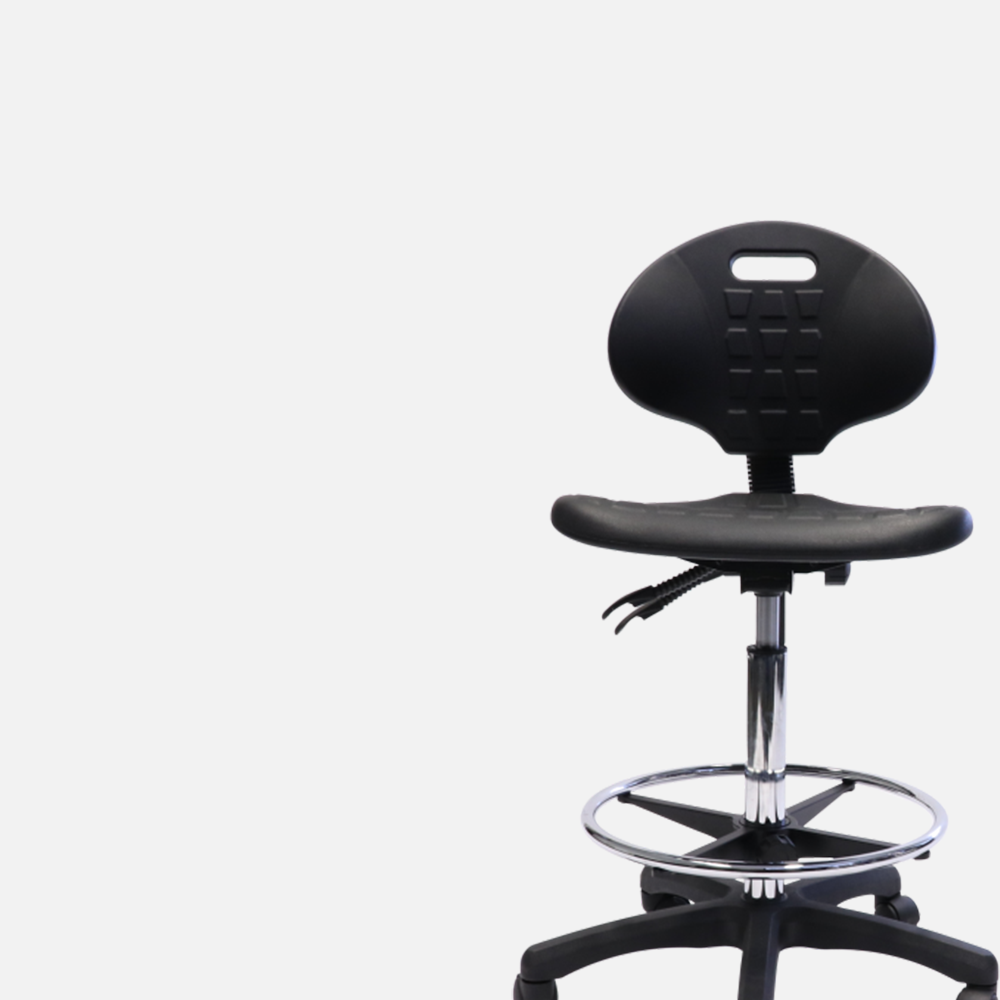Introduction
If you’ve ever been tasked with buying office chairs for your organisation, you’ve likely come across terms like AFRDI certified, AS/NZS 4438 compliant, or EN 1335 tested.
But what do these standards really mean? And more importantly — how do they help you select chairs that support staff wellbeing, productivity, and safety?
Before working in this space, I assumed a chair that looked good and claimed to be "ergonomic" would do the job. These days, I know that proven standards compliance is critical for ensuring you’re investing in seating that actually delivers.
In this blog, we’ll unpack the key ergonomic office chair standards you need to know — and show how they support smart procurement decisions across Australia’s business, government, and education sectors.
You can Explore our full range of afrdi approved chairs here.
Why Office Chair Standards Matter
Let’s start with the why.
Sedentary work is now recognised as a major health risk. Prolonged sitting in poorly designed chairs contributes to:
- Musculoskeletal disorders (MSDs)
- Back, neck, and shoulder pain
- Upper limb RSI
- Poor circulation
- Reduced productivity and morale
Australian workplaces are legally required to provide safe, fit-for-purpose equipment under WHS legislation. And the office chair is one of the most-used pieces of equipment in any modern workplace.
Standards-based procurement helps ensure:
- Chairs meet minimum ergonomic and safety benchmarks
- Products are tested for durability and long-term performance
- Your organisation reduces risk of injury and costly compensation claims
AS/NZS 4438:1997 — The Core Australian Standard
AS/NZS 4438:1997 — Height Adjustable Swivel Chairs is the principal Australian standard governing office task chairs.
It defines minimum requirements for:
- Adjustability → seat height, backrest, armrests (if fitted), tilt mechanisms
- Stability → resistance to tipping and rolling
- Strength and durability → mechanical performance under load
- Safety → minimising risk of entrapment or failure
Compliance with AS/NZS 4438 is essential for chairs used in:
- Government offices
- Council chambers
- Schools and universities
- Corporate workplaces
Why it matters:
- Aligns with Safe Work Australia guidance on office ergonomics
- Helps demonstrate due diligence under WHS laws
- Ensures chairs are fit for 8+ hour daily use in commercial settings
If a supplier can’t confirm compliance with AS/NZS 4438, be cautious — you may be buying non-compliant or unsafe products.
AFRDI Level 6 Certification — The Gold Standard in Australia
AFRDI Level 6 Blue Tick Certification is the most trusted independent testing mark for ergonomic office chairs in Australia.
Issued by the Australasian Furnishing Research and Development Institute (AFRDI), this certification builds on AS/NZS 4438 and tests chairs to much higher thresholds.
Key testing areas include:
- Ergonomic design and adjustability → tested against anthropometric data
- Structural strength → 8+ hour use by users up to 110–135 kg
- Durability → thousands of cycles simulating real-world use
- Safety and stability → tipping resistance, smooth casters, etc.
Why it matters:
- AFRDI Level 6 is the benchmark required by many government tenders and education sector tenders.
- It is recognised by Australian ergonomic consultants and WHS advisors.
- It ensures chairs are suitable for intensive commercial use → critical for public service roles.
Look for AFRDI-certified ergonomic task chairs when procuring seating for WHS-critical environments.
EN 1335 — The European Standard
EN 1335 is the primary European standard for office task chairs.
It specifies:
- Anthropometric dimensions → ensuring chairs fit a broad range of body sizes
- Adjustability → seat height, depth, backrest angle, lumbar support
- Durability → mechanical strength and longevity testing
- Stability and safety → tipping resistance
Chairs tested to EN 1335 are commonly used across:
- European public sector workplaces
- UK government departments
- International corporations with global procurement policies
In Australia, EN 1335 compliance is sometimes specified in multinational fit-outs — and it’s perfectly compatible with AS/NZS 4438 compliance.
ANSI/BIFMA Standards — The US Benchmarks
In the United States, the relevant standards are:
- ANSI/BIFMA X5.1 → durability and stability testing
- BIFMA G1 → ergonomic dimension guidelines
- HFES 100 → detailed ergonomic criteria for workstation components
Chairs meeting these standards offer excellent durability and ergonomic performance. However:
- US anthropometric data differs slightly from Australian datasets → always ensure chairs also meet AS/NZS 4438 for local compliance.
In Australian tenders, you’ll often see products listed as:
Complies with AS/NZS 4438, AFRDI Level 6, EN 1335, and/or ANSI/BIFMA X5.1
This provides the best of all worlds — robust local compliance + global best practice.
Putting Standards Into Practice — Smart Procurement Tips
Having worked with procurement teams across local councils, universities, and corporate groups, here are my top tips:
✅ Always insist on AFRDI Level 6 certified chairs for:
-
- Government contracts
- Education settings
- Public-facing roles
✅ For hybrid environments or light commercial use:
-
- Prioritise AS/NZS 4438 compliance
- Look for chairs tested to EN 1335 or BIFMA as a bonus
✅ For heavy-duty users (135+ kg) or specialist roles:
-
- Specify AFRDI 142 rated chairs → tested for larger users
✅ Don’t rely on supplier claims alone:
-
- Request a certificate of compliance or test report
- If in doubt, consult an ergonomist or WHS advisor
For large-scale office upgrades or workspace transformations, working with an experienced office design and fit-out specialist ensures that seating choices align with overall ergonomic and aesthetic goals. Explore our full office design and fit-outs capabilities →
Real-World Example: University Fitout
In a recent university faculty fitout project:
- The initial chair tender included non-certified imported chairs that looked ergonomic but lacked AFRDI certification.
- The university’s procurement team engaged an independent ergonomist, who recommended upgrading to AFRDI Level 6 chairs.
- Result:
- Improved staff comfort
- Fewer MSD complaints
- Enhanced WHS defensibility
FAQs
What is the key Australian office chair standard?
AS/NZS 4438:1997 → mandatory for safe commercial office chairs in Australia.
Is AFRDI certification necessary?
Highly recommended. AFRDI Level 6 is the gold standard for proven durability, ergonomics, and WHS compliance.
Are EN 1335 chairs suitable for Australian workplaces?
Yes — but ensure they also meet AS/NZS 4438 requirements.
What should hybrid workplaces look for?
Seek chairs that are AFRDI Level 6 or AS/NZS 4438 compliant, with intuitive adjustability for hot-desking and home/office transitions.
Where can I find a comprehensive guide to seating standards?
See our comprehensive guide to ergonomic seating standards →.
Conclusion: Standards Matter — Here’s Why
Choosing the right ergonomic chair isn’t just about comfort or style — it’s about:
- Protecting employee health
- Reducing injury risks
- Complying with WHS legislation
- Supporting productivity and wellbeing
By understanding AS/NZS 4438, AFRDI Level 6, EN 1335, and ANSI/BIFMA standards, you can make smarter procurement decisions — and deliver real value to your organisation.
Explore our curated range of ergonomic task chairs compliant with Australian and international standards →.









Leave a comment
This site is protected by hCaptcha and the hCaptcha Privacy Policy and Terms of Service apply.